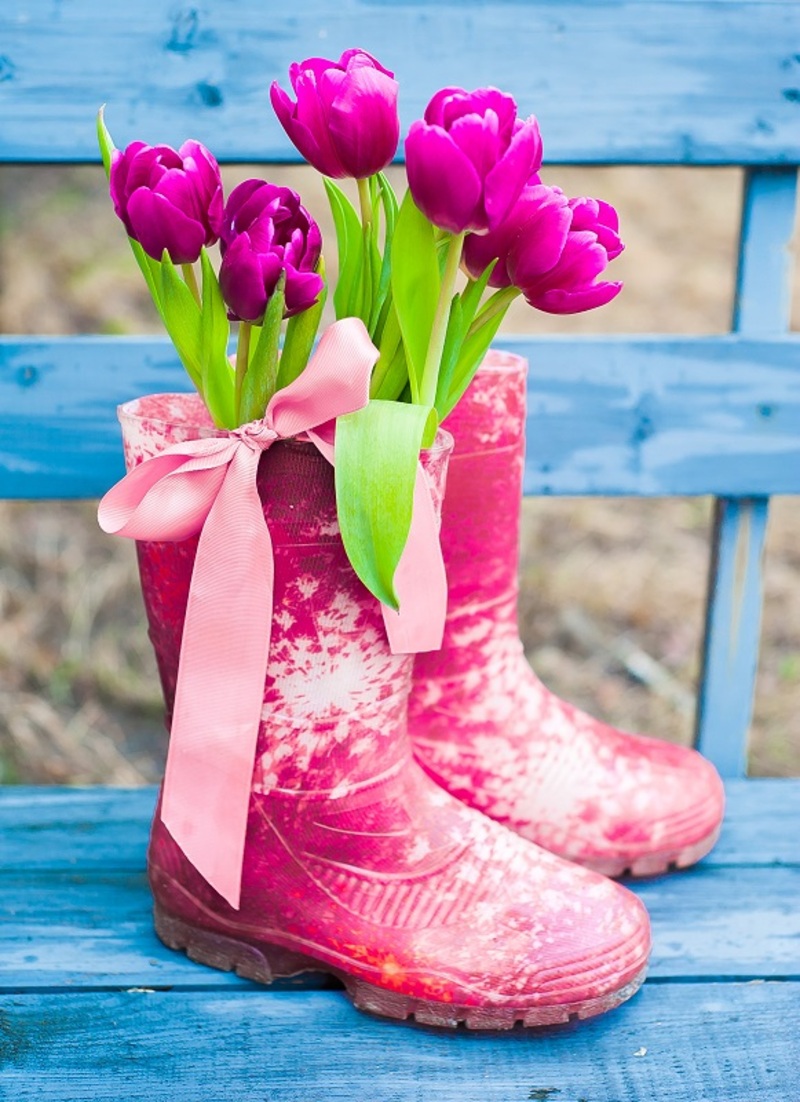The Tradition Behind Red Roses on Valentine's Day
Posted on 02/07/2025
The Tradition Behind Red Roses on Valentine's Day
Valentine's Day is a celebration of love, romance, and heartfelt emotions, marked annually on February 14th. Among the many symbols and gifts exchanged on this day, none are quite as iconic or universally recognized as the red rose. But where did the tradition of giving red roses on Valentine's Day originate? What is it about this velvety bloom that has enamored lovers for centuries? In this comprehensive article, we'll uncover the history, symbolism, and continued allure of red roses associated with Valentine's Day, as well as tips for selecting, gifting, and interpreting this beautiful flower.

Red Roses: A Deep-Rooted Symbol of Love
The connection between red roses and love stretches back thousands of years. Red roses have played a pivotal role in art, literature, and mythology across numerous civilizations and eras. To truly understand the tradition, it's essential to explore this long and colorful history.
Origins in Ancient Mythology
Greek and Roman mythology is filled with references to roses, particularly the red variety. The ancient Greeks associated the rose with Aphrodite, their goddess of love, beauty, and desire. According to myth, the first red rose sprang from the ground where Aphrodite's tears and the blood of her lover, Adonis, mingled after his untimely death. This poignant legend imbues the red rose with themes of passionate love, loss, and eternal devotion.
Similarly, the Romans revered Venus, their goddess of love, and considered the red rose her sacred flower. The rose became an emblem of secrecy and confidentiality, partly due to its association with Venus's clandestine affairs. In fact, the phrase sub rosa, meaning "under the rose," came to signify a confidential matter.
The Symbolism of the Red Rose
Over the centuries, the red rose has come to symbolize a range of emotions and messages, especially in the context of romantic love:
- Passion: The vivid red hue is universally linked with desire and intense emotion.
- Deep Love: Red roses express not just affection but deep, abiding love and commitment.
- Courage: In some traditions, red roses represent the courage to love boldly and fiercely.
- Respect and Admiration: The gesture of giving a single or bouquet of red roses can also convey admiration and respect.
The Evolution of Valentine's Day and Floral Traditions
From Pagan Festivals to Modern Romance
The origins of Valentine's Day itself are murky, with roots in both ancient Roman festivals and Christian martyrdom. The Roman festival of Lupercalia, held in mid-February, celebrated fertility and included rituals that paired young men and women. Over time, Christian influences shifted the focus toward celebrating the martyr Saint Valentine, who, according to legend, performed secret marriages for forbidden lovers.
By the Middle Ages, February 14th became linked with romantic love, thanks in part to the writings of Geoffrey Chaucer and other poets. The exchange of handwritten notes and flowers gradually became part of the celebration. In Victorian England, this tradition flourished, as strict social codes made it difficult to express feelings openly. Flowers, with their secret meanings, became a fashionable and discreet way to convey affection on Valentine's Day.
The Language of Flowers: Floriography
During the 18th and 19th centuries, a phenomenon known as floriography, or the "language of flowers", swept across Europe. Every flower, and even its color and arrangement, was assigned a symbolic meaning. This was especially significant on Valentine's Day, as suitors used bouquets to send coded messages to their beloveds.
In the lexicon of floriography:
- Red roses meant "I love you" or sincere romantic intentions.
- Pale pink roses suggested admiration or gratitude.
- White roses represented purity or secrecy.
- Yellow roses signified friendship or jealousy.
Among all the blooms, it was the red rose that most powerfully conveyed ardent love--making it the undisputed symbol of Valentine's Day gifts.
Red Roses in Art, Literature, and Pop Culture
Beyond their mythic and historical roots, red roses have become an enduring motif in art, poetry, music, and film--each medium contributing to their lasting association with romance and passion.
- Literature: From Shakespeare's sonnets to modern romance novels, red roses often serve as metaphors for love's beauty and intensity.
- Visual Art: Artists throughout history, including Botticelli and Renoir, have used red roses to illustrate romantic scenes and evoke emotion.
- Music: Countless love songs reference red roses, immortalizing them as gestures of devotion.
- Film & TV: From classic Hollywood films to contemporary blockbusters, the act of presenting a lover with a red rose remains a powerful storytelling device.
Global Variations: Red Roses and Valentine's Day Around the World
While the tradition of giving red roses for Valentine's Day is most prevalent in Western countries, the practice has spread worldwide. Here's how different cultures incorporate red roses and love blossoms into their Valentine's Day celebrations:
- United States & Canada: The classic dozen red roses are a top gift, often accompanied by chocolates and cards.
- United Kingdom: Similar traditions prevail, with red roses considered the gold standard for declaring love.
- Japan: Valentine's Day is slightly different--women give chocolates to men, but red roses are still given between couples.
- France: Known as the country of love, French tradition often includes red roses, frequently paired with poetic notes.
- South America: In countries like Brazil, Valentine's Day is celebrated later in the year, but red roses are still exchanged between couples.
- India & China: Modern urban celebrations embrace Western customs, including red roses, reflecting the flower's universal romantic message.
Why Choose Red Roses for Valentine's Day?
The Deep Meaning Behind Red Blooms
When you give or receive red roses on Valentine's Day, the gesture taps into a rich tapestry of emotion, tradition, and symbolism:
- Universal Language: Regardless of culture or language, red roses instantly and unmistakably communicate love.
- Simple Elegance: Their striking color and elegant form make red roses a timeless choice.
- Enduring Legacy: By choosing red roses, you're participating in an ancient, global tradition that unites lovers across generations.
- Versatility: Whether as a single stem or an opulent bouquet, red roses can suit intimate gestures or grand declarations.
Modern Trends: Creative Twists on an Old Classic
While traditional red roses remain the most popular Valentine's gift, many people are adding personal, creative touches:
- Mixing red roses with other blooms, such as lilies or baby's breath, for a unique bouquet.
- Pairing roses with thoughtful gifts like handwritten notes, jewelry, or personalized keepsakes.
- Opting for sustainably-sourced or organic red roses to honor love for both people and the planet.
- Customized arrangements using different shades of red to convey subtle meanings (such as deep or scarlet roses for longing, lighter reds for budding attraction).
Caring for Your Valentine's Red Roses: Tips for Lasting Beauty
If you're lucky enough to receive--or gift--a bouquet of red roses on Valentine's Day, here are some essential care tips to keep them fresh and beautiful as long as possible:
- Trim the stems diagonally before placing them in water to increase water uptake.
- Use clean vases and fresh water mixed with flower food to nourish your blooms.
- Remove any leaves that will be submerged in water to prevent bacterial growth.
- Change the water every couple of days and re-cut stems as needed.
- Display away from direct sunlight and drafts for maximum longevity.

Interpreting the Number of Red Roses: Hidden Messages
Did you know that the number of red roses given can carry special significance? Here's what different quantities traditionally mean:
- Single red rose: "You are the one for me."
- Three roses: "I love you."
- Six roses: "I want to be yours."
- Ten roses: "You are perfect."
- Dozen roses (12): "Be mine." (The classic Valentine's bouquet!)
- Twenty-four roses: "I am yours 24 hours a day."
- Fifty roses: "My love has no bounds."
Conclusion: The Enduring Romance of Red Roses on Valentine's Day
The tradition behind red roses on Valentine's Day is as rich and evocative as the flower itself. From mythic beginnings and poetic wordplay to modern bouquets and global celebrations, the red rose remains the ultimate declaration of romantic affection.
Each time you exchange red roses on February 14th, you participate in an age-old expression of love that transcends language, borders, and time. Whether you're planning a grand romantic gesture or a quiet, intimate moment, a red rose is not just a flower--it's a message, a memory, and a promise, all wrapped in crimson petals.
So this Valentine's Day, when you see or give a bouquet of red roses, remember: you're not just gifting flowers, you're weaving yourself into a timeless, universal tale of love.
Latest Posts
Top 10 Low-Maintenance Office Plants for a Greener Workspace
Discover Your Birth Flower and Unveil Its Secrets About You
The Tradition Behind Red Roses on Valentine's Day





